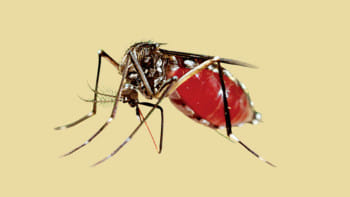Children in war

War remains the decisive human failure of which children are the worst victims. That was my first reaction when I saw the photo of Omran's dust-and blood-covered face last week at breakfast. Who is this child? Are his parents and family members alive? Is he going to be alright? How much wrong must have been done by all of us before a five-year-old finds himself in a situation like this?
The morning gradually turned into noon and I got busy at work. Life moves on, right? But this time it didn't. The image became more vivid as the night grew darker. What and how does Omran think about the world? What opinions does he hold of adults in general? Will he grow up to believe in rules, in government?
Omran Daqneesh was rescued from a damaged building after a Russian airstrike in the Syrian city of Aleppo. He was, reportedly, one of 12 children on that day—not an unusual number—at one of the hospitals in the city's rebel-held eastern section. Within minutes of being posted by witnesses and journalists, a photograph and a video of him began rocketing around the world on the front page of every major newspaper and social media. Will this moment transcend being just a hashtag or a viral moment to become a movement to end the war?
The end of summer has apparently become an annual custom for the world to wake up to Syria's tragedy through images of its suffering children. Three years ago, it was the photos of gassed children from the Ghouta region outside Damascus, who suffocated to death after a chemical weapons attack on their neighbourhoods, widely blamed on government forces, while they were asleep in underground bomb shelters. They looked like perfect porcelain dolls lined up in a row, polished and flawless.
Last year, it was the photo of Syrian toddler Aylan who washed up on a Turkish beach after drowning while trying to reach Greece with his family as they fled the war like millions of other refugees. The child was dead. But his body was intact, lying in the sand as if sleeping, and dressed neatly with unmistakable parental love for his long journey.
For millions of Syrian children growing up during this raging war, their present is bleak and their future even bleaker. If they stay in their homes, they are targets waiting to be bombed. They may suffer hunger and illness if they live in besieged areas. They may not have access to schools or even access to safe passage to school.
If they go to a neighbouring country, they may end up working as child labourers to support their families. Moving to Europe as millions have done, poses even greater risks—of drowning on the way, being trapped in detention camps, and finally, after reaching their destination, falling victims to discrimination and hate campaigns.
Syria is not the only place burning. According to estimates made by Unicef, there have not been so many children suffering the consequences of conflicts, crises and natural catastrophes since the Second World War. Some 250 million girls and boys, one in nine children, are forced to grow up in conflict zones.
And regardless of public revulsion, the rising number of child casualties is unlikely to drop anytime soon. Today's wars are increasingly within countries rather than between them; the fighting has moved to city streets, invading playgrounds, homes and schools.
So the portrayal of children as a symbol of this despair is not new; images of dead and injured children from places in conflict are printed in newspapers, shown on TV and shared daily on social media, many of them indescribably more disturbing than Omran's. But for some reason, even minds numbed to hardship are jarred by this one.
Omran stares, disorientated, shocked and above all, weary, as if a symbol of Aleppo's suffering, a representative of his people's pain to the world. He is too shocked to cry. Then he puts a hand to his bloody brow, looks at his palm in surprise, and tries to wipe it on the chair. We see children do the same all the time—with ketchup, ice cream or chocolate. Not blood.
He looks directly at the camera, at us, in complete silence. What else is an appropriate response to what had just happened?
The silence of a child in war to match the deafening silence of the world in peace.
The writer is a member of the editorial team at The Daily Star.


 For all latest news, follow The Daily Star's Google News channel.
For all latest news, follow The Daily Star's Google News channel. 



Comments